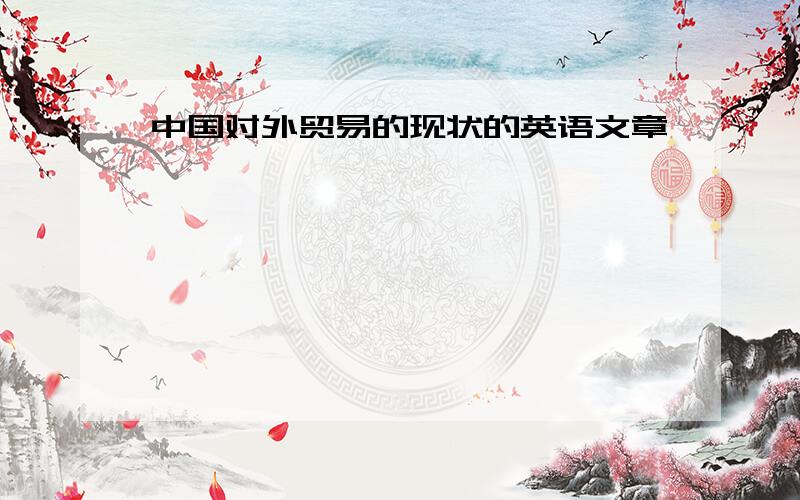中国对外贸易的现状的英语文章
来源:学生作业帮助网 编辑:作业帮 时间:2024/11/30 03:13:50

中国对外贸易的现状的英语文章
中国对外贸易的现状的英语文章
中国对外贸易的现状的英语文章
It will be a slow process
THE World Bank's Louis Kuijs describes the evolution of Chinese trade since 2007:
In all,Chinas exports have continued to strongly outpace world trade.Their global market share rose from 7.4% in 2007 to an estimated 9.6% in 2010,and this trend has continued in the first 4 months of 2011.
In addition to the strength of gross exports,the value added content of exports has continued to rise.This is because of deeper supply chains in the processing sector and a rising share of normal (non processing) exports,which have a higher value added content.Thus,in value added terms exports have grown even somewhat faster than headline exports.In several parts of the world,Chinas strong export performance is causing economic and sometimes also political friction.
There is another side to Chinas external trade story.Chinas domestic economy grew even faster than exports since 2007 and Chinas imports surged alongside domestic demand.As a result,imports strongly outpaced exports,with import volumes 34% higher in 2010 than in 2007,in real terms,compared to a 24 % increase in export volumes.This has basically driven the decline in the current account surplus from 10.1% of GDP in 2007 to 5.1% in 2010,leading to external rebalancing simply because China grew much faster than the rest of the world.In the first 4 months of this year,import volume growth eased but to a still steady pace.
China's imports have grown faster than China's exports,which have grown faster than global trade.Chinese leaders have been very quick to point to a declining trade surplus as evidence of progress on internal rebalancing.But will this continue?It has been nearly a year since China resumed a slow appreciation of the yuan against the dollar,and in that time China's currency has appreciated by about 5.2%more than over the course of the first year of the 2005-2008 appreciation.At the same time,however,the trade-weighted dollar has declined about 9%,such that China's currency has actually fallen against those of many of its trade partners.
China's real exchange rate against the dollar has improved by much more; wage growth and inflation more broadly have proceeded far faster in China than in America.But China's real appreciation against other emerging markets,against which it competes for export industries,has again been far less,as those countries have also seen substantial inflation in prices and wages.
As Mr Kuijs argues,the path China's external surplus will follow moving forward is far from clear.We learned this morning that America's trade deficit fell slightly in April on higher exports and lower imports.But America's deficit with China rose by $3.5 billion.With fiscal austerity looming,every bit of external demand counts.Despite the progress China has made,its leaders may again come under fire from American politicians if bilateral rebalancing doesn't accelerate.
你需要自己写的还是网上的文章也可以?